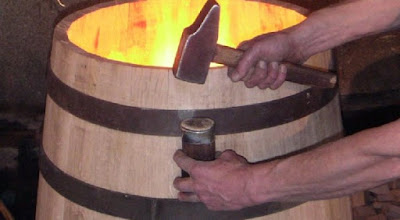‘Tis the season to give
thanks. While I’ll always be a San
Francisco girl at heart, I am very thankful to have relocated to the splendor of San Diego
six years ago. What’s not to love about 70 degree year-round weather, swaying palms, and beautiful ocean breezes?
I am frequently asked for advice on where to
eat in the San Diego area and what the best accommodations are. Here’s my list list of the don’t miss places.
Where to drink:
La Valencia Hotel (La Jolla). It
doesn’t get any better than a glass of champagne on the hotel’s gorgeous terrace. If the fog has rolled in don’t
despair as the inside parlor, overlooking the same view, is uber comfy. Old-world charm at its best.
La Valencia small terrace is a charmer.
The Del Coronado (Coronado).
This beach-front grand-dame hotel appears in nearly every travel poster
on San Diego. The “Del,” offers a perfect
spot to enjoy an aperitif at the outdoor bar downstairs. Over the holiday season you can watch
ice-skaters on the rink that is brought in every Christmas---with the beach and
breaking waves in the background. Southern
California at its finest.
The "Del" is a San Diego landmark.
Mr. A's gets an A for sunset libations.
Island Prime: Should you be
looking for a place to imbibe or dine near the airport, this is without a doubt the best
spot. First, you’ve got jaw-dropping
views of the harbor and the entire city skyline. Moreover, the food is very good. This is an extremely popular place that
operates on a first-come-first served basis so plan accordingly.
Where to eat:
Market Restaurant (Del Mar): For a fine-dining experience,
look no further in all of San Diego county.
I especially love the short ribs. Although we always bring our own, there's a fabulous wine list. Keep in mind that reservations are essential. Pricey but worth it.
To duplicate your magnanimous meal, you can buy the chef's cookbook.
Sbicca (Del
Mar). I love this spot, especially their
outdoor terrace with peeks of the nearby sea.
Mid-week this spot is all locals chowing down. Sundays and Mondays there is no corkage. Happy hour prices are a steal. Love, love, love their burger.
A definite OMG moment at Sbicca.
Jake’s ( Del
Mar). Right on the beach, this place has
it all--- killer views, tasty
food and friendly service. Parking is difficult, but use
their valet which is a good bargain for only $4. Highly suggested for brunch or lunch.
Jake's windows open allowing so that diners can feel & smell the sea.
Flying Pig (Oceanside
& Vista). This retro-type diner serves up terrific food. Using a
farm-to-table concept, the immensely popular place is usually filled mid-week
by 6:30 pm, so go early. Fun atmosphere
and super-duper food, especially their double pork chop raised from local
piggies, as well as their freshly made pasta.
The 2nd Flying Pig just opened in Vista.
Where to stay:
- La Valencia Hotel (La Jolla). If you’re looking for old-world character, it doesn’t get any better. Located right in the heart of the village, their one bedroom “villas” are one of the most romantic places on the southern coast. Expensive and worth every penny.
- The Del Coronado (Coronado). Coronado’s beach is one of the best in the area, and the Del is world-famous. Be sure to ask for a room with a view…otherwise don’t bother. If you can tear yourself away from the beach, there’s also a fabulous pool which is one of the best places I know for people watching. 5 stars with 5 star prices.
- L'Auberge (Del Mar). If you’re looking for a smaller and more intimate experience, the Auberge has your name on it. Located near the beach, their well-outfitted rooms are the perfect spot for a secluded get-away. Bring plenty of do-re-mi.
L'Auberge offers quiet elegance.
Giving
thanks for all of the above very special places in my backyard.



























